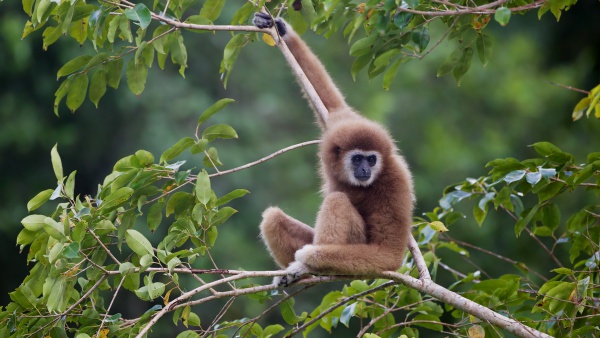Facts About Lar gibbon
The lar gibbon, also known as the white-handed gibbon, is an endangered primate belonging to the gibbon family, Hylobatidae. This captivating creature boasts five subspecies and is easily identifiable by its distinct fur coloration, elongated arms, and absence of a tail. These gibbons inhabit the tropical rainforests of Indonesia, Laos, Malaysia, Myanmar, and Thailand. Their diet primarily includes fruits, though they also consume leaves, insects, and flowers.
Lar gibbons are diurnal and arboreal, rarely descending to the ground. They navigate their forest habitats through brachiation, a mode of locomotion that involves swinging from branch to branch using their long arms. Their daily activities encompass feeding, resting, traveling, socializing, and vocalizing. Typically, these gibbons form monogamous family units, though recent research suggests they may exhibit more flexible mating behaviors than previously understood. Communication is achieved through various vocalizations, with the breeding pair often engaging in a distinctive "great call" duet.
Reproduction occurs throughout the year, with most conceptions taking place during the dry season. Female lar gibbons begin reproducing at about 11 years of age, with a gestation period of approximately six months, usually resulting in the birth of a single offspring. The young are nursed for around two years and reach full maturity at about eight years old. In their natural habitat, lar gibbons can live up to 25 years.
Unfortunately, lar gibbons face numerous threats, including hunting, habitat loss due to deforestation for agriculture, and capture for the pet trade. Conservation efforts are crucial to safeguard these extraordinary primates and preserve their natural environments.

 Cambodia
Cambodia